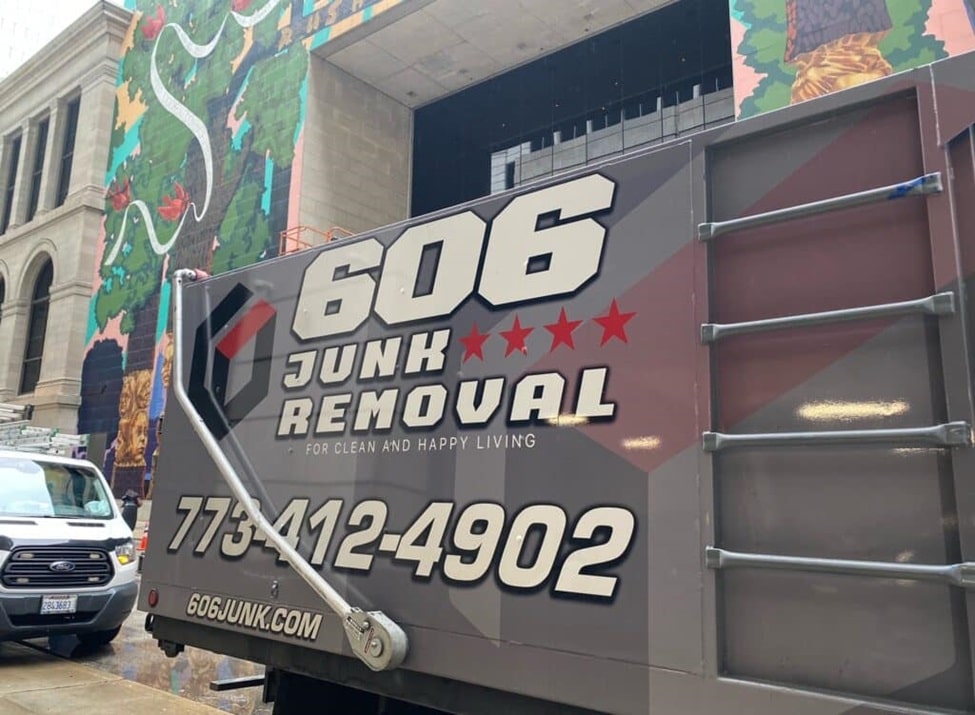
Choosing the right dumpster size for your project doesn’t have to feel like a guessing game. Whether you’re clearing out household junk, tackling a renovation, or managing construction debris, having the appropriately sized dumpster can make all the difference. It’s common to misjudge how much waste a project will produce—often leading to bins that overflow or, worse, the need to rent a second dumpster.
On the other hand, going too big can mean paying for unused space. The key is finding a balance based on the type of materials you’re tossing, the scope of your project, and how much room you have on-site. This guide is designed to help you understand your options, avoid common pitfalls, and make a smart, cost-effective decision that keeps your cleanup efficient and stress-free.
Understanding Dumpster Sizes and Their Capacity
When planning a cleanup or renovation project, understanding dumpster sizes and their capacities can save you time, money, and stress. Dumpsters typically come in sizes ranging from 10 to 40 cubic yards. A 10-yard dumpster holds about three pickup truck loads and is perfect for small projects like decluttering a room or removing yard waste. A 20-yard dumpster suits mid-size home renovations, while 30-yard and 40-yard dumpsters are geared toward major construction, demolition, or full-home cleanouts.
Choosing the right size prevents costly missteps—opting for too small a container may require multiple hauls, and an oversized one means you’ll pay for space you won’t use. Dumpster capacity isn’t just about volume; weight limits matter too, especially with heavy materials like concrete or roofing shingles. Evaluate the scope of your project and type of debris you’ll be tossing to match your needs with the appropriate dumpster size for the most efficient cleanup.
How to Choose the Right Dumpster Size for Your Project
Choosing the right dumpster size starts with clearly defining your project. Are you cleaning out a cluttered attic, remodeling a kitchen, or tearing down a garage? Each type of job generates different amounts and types of waste. Small cleanup jobs or single-room cleanouts typically only need a 10-yard dumpster, while more involved renovations—like kitchen or bathroom remodeling—benefit from a 20- or 30-yard dumpster. For large-scale projects like roof replacements, major construction, or whole-house cleanouts, a 40-yard dumpster may be the most efficient choice.
Also, consider the density and type of materials you’re discarding. Heavy items like bricks, tile, or drywall fill up space quickly and can exceed weight limits. Think ahead and estimate your volume of waste as accurately as possible. It’s always better to slightly overestimate than underestimate—having extra space ensures you won’t run out of room halfway through your project and be forced to pay for an additional rental.

How Much Waste Can a 10-yard Dumpster Hold
A 10-yard dumpster is compact yet surprisingly versatile, making it ideal for smaller-scale projects. It holds approximately 10 cubic yards of material, which is roughly equivalent to three full pickup truck loads. This makes it a perfect solution for modest cleanouts like a single room, small attic, or basement purge. It’s also commonly used for yard waste disposal, like trimming branches, pulling up bushes, or cleaning up after a storm.
Light remodeling work, such as removing old flooring, cabinets, or drywall, also fits comfortably within this size. Because it’s smaller, a 10-yard dumpster can often be placed in tighter spaces like a driveway, adding convenience if you’re working in a residential area with limited access. Just keep in mind that this dumpster isn’t designed for heavy-duty construction materials or bulky items like large furniture or appliances.
When to Opt for a 20-yard Dumpster
A 20-yard dumpster is one of the most popular choices for both homeowners and contractors because of its size and flexibility. It can hold approximately 20 cubic yards of waste—around six pickup truck loads—which makes it ideal for medium-sized renovation projects. This includes tasks like removing carpeting from an entire home, updating a kitchen or bathroom, replacing siding, or doing a roof tear-off. It’s also a great option for larger cleanouts, such as clearing out a garage, attic, or basement.
The 20-yard size is large enough to accommodate bulky materials like furniture, cabinetry, and appliances but compact enough to still fit comfortably in most driveways. If you’re juggling a project that has a mix of materials—such as wood, metal, drywall, and general household waste—a 20-yard dumpster provides the space you need without going overboard. It strikes the perfect balance between capacity and cost, making it a solid all-around choice for a variety of needs.
How to Tell if a 30-yard Dumpster is Right for You
A 30-yard dumpster is well-suited for large-scale projects where waste volume starts to add up quickly. With the ability to hold about 30 cubic yards—or nine pickup truck loads—it’s commonly used for multi-room remodels, large home cleanouts, and smaller construction or demolition jobs. If you’re planning a major renovation, such as a full kitchen and bathroom overhaul, or clearing out an estate property, a 30-yard dumpster gives you the space to dispose of everything in one go.
It’s also great for bulky, heavy items like old furniture, cabinetry, and flooring materials. While it’s more expensive than smaller sizes, it can actually save money in the long run by avoiding the need for multiple smaller dumpsters. Keep in mind, however, that the larger size may not be suitable for tight spaces or narrow driveways. Before renting, consider both your debris volume and the available space for delivery.
Maximizing Your Dumpster Space
To get the most out of your dumpster rental, it’s important to load it strategically. Start by breaking down large items—disassemble furniture, cut up long pieces of wood or metal, and flatten cardboard boxes. Stack items tightly, like a puzzle, to minimize empty air pockets and maximize space. Load heavier, denser materials first, placing them on the bottom. Then layer lighter materials on top. This not only helps with space management but also keeps the dumpster balanced. Avoid tossing items in randomly, as this leads to wasted space and potentially costly overflows.
Be aware of your dumpster’s weight limits—overloading can result in additional charges, even if it looks like there’s still room. Never stack materials above the dumpster’s fill line or hang anything over the edges. By taking a few extra minutes to plan your loading strategy, you can save money, stay within rental guidelines, and make your cleanup smoother and more efficient.
What Happens if You Choose a Dumpster That’s Too Small?
Underestimating your dumpster size can quickly turn into a hassle. If your dumpster fills up too fast, you may need to schedule an additional pickup or rent a second container, both of which add extra costs and delays to your project. You’ll also need to stop your work to wait for a replacement dumpster, which can be frustrating if you’re on a tight timeline. Trying to cram everything into a small container may also lead to unsafe loading practices—like overfilling above the rim—which most rental companies prohibit.
Not only can this result in additional fees, but it can also create safety risks during pickup. In some cases, you may find yourself needing to make multiple trips to the dump, defeating the convenience of having a dumpster on site. To avoid these issues, take the time to assess your waste volume realistically.
What Happens if You Choose a Dumpster That’s Too Large
While choosing a larger dumpster might seem like the safest bet, it’s not always the most economical one. Renting a dumpster that’s too big for your needs means you’ll end up paying for unused space—a cost that adds up, especially for short-term or budget-conscious projects. Larger dumpsters come with higher base rental fees, and if you only fill them halfway, that extra money is essentially wasted. In residential areas, oversized dumpsters may also pose placement challenges, taking up valuable space in your driveway or yard.
Additionally, it may be tempting to throw in items you hadn’t originally planned to discard just to “get your money’s worth,” potentially leading to overloading or violations of rental policies. Instead, carefully assess your project needs and choose a dumpster size that aligns closely with your waste output.
Factors Affecting Dumpster Size Selection
Selecting the right dumpster isn’t just about guessing how much junk you’ll have—it requires evaluating several key factors. First, consider the scope of your project. A quick garage cleanup is much different than a full kitchen remodel or a construction job. Second, look at the type of debris you’ll be disposing of. Lightweight but bulky items like furniture take up lots of room, while dense materials like bricks, tile, or concrete might require a heavy-duty dumpster with a specific weight capacity.
Also, assess your available space—will a larger dumpster fit in your driveway or worksite? Think about the duration of your project, too. If it’s a multi-week renovation, you might need a larger container to avoid multiple hauls. Local regulations and homeowner association rules might also restrict what size you can place and where.
Conclusion
Choosing the right dumpster size doesn’t have to be complicated. By understanding your project, evaluating the types of waste you’re disposing of, and knowing the available dumpster sizes, you can make an informed decision. Whether you’re working on a small cleanup or a major construction project, there’s a dumpster that fits your needs. If you’re unsure about which size to choose, don’t hesitate to reach out to the experts at 606 Junk Removal and Dumpster Rental in Chicago. Their team can help guide you through the process and ensure you rent the right dumpster for your project. For more information or to get started, contact them at 773-412-4902 or by email at info@606junk.com. They are located in Chicago, IL, and are ready to assist with all your junk removal and dumpster rental needs.
